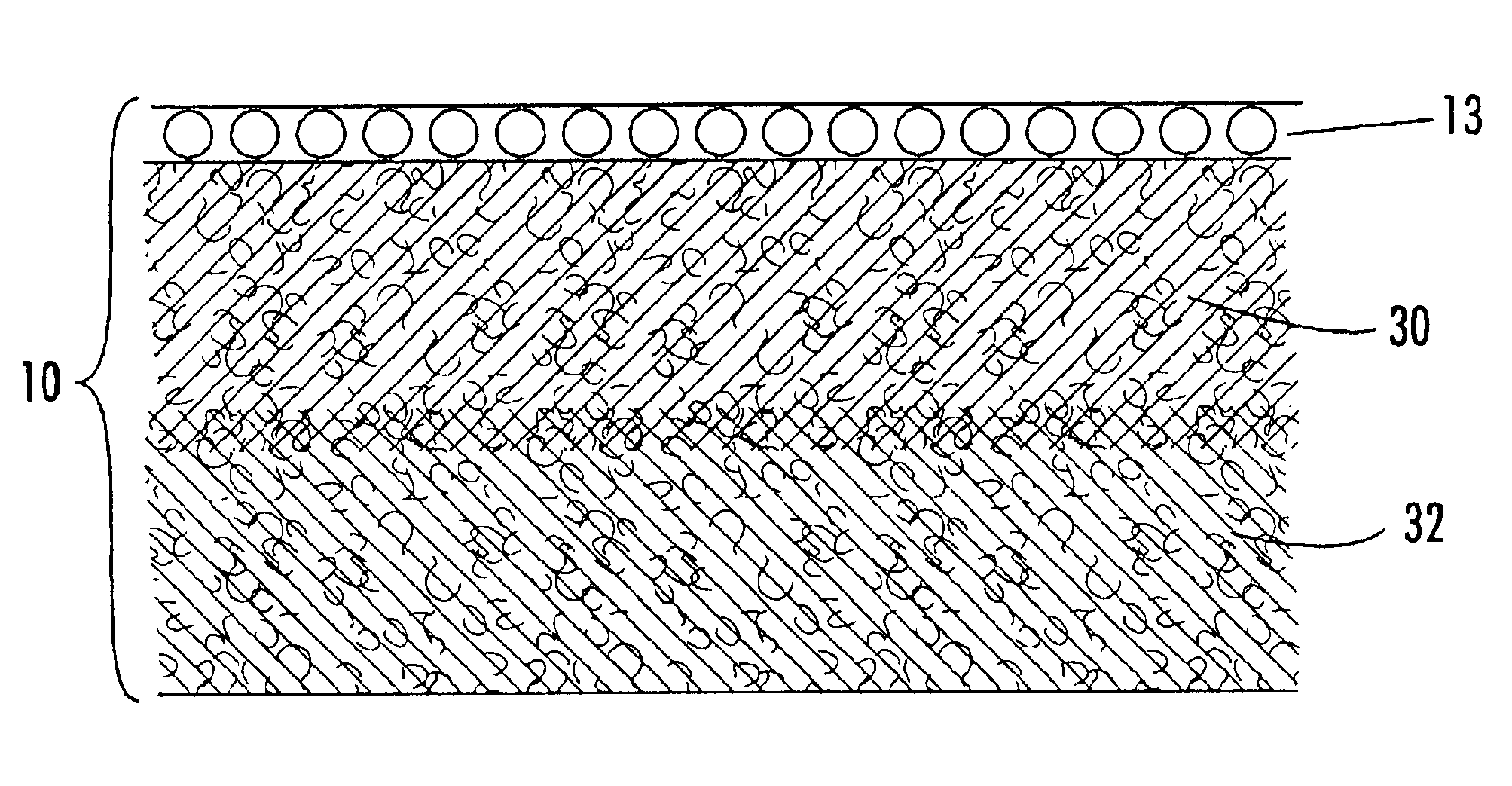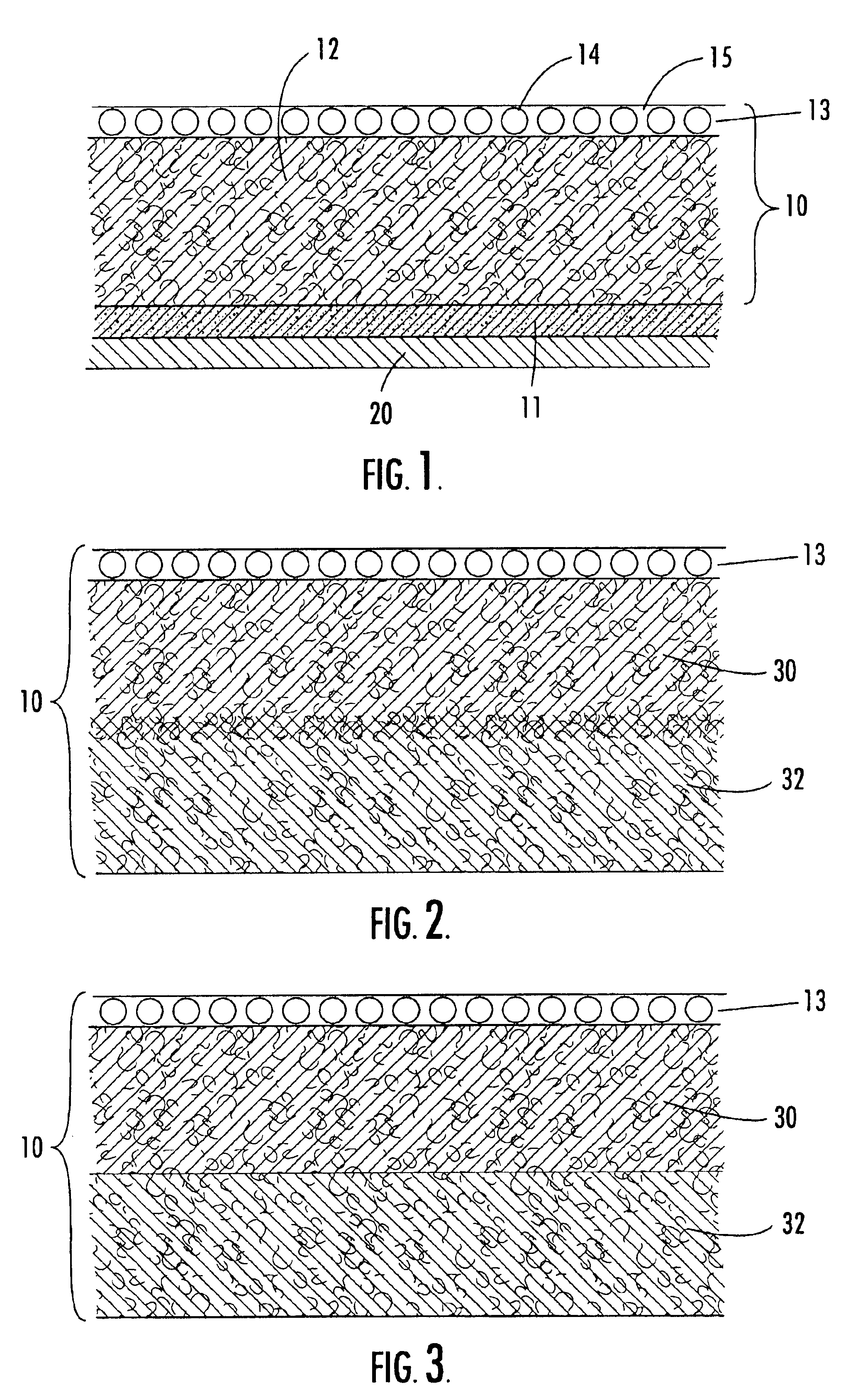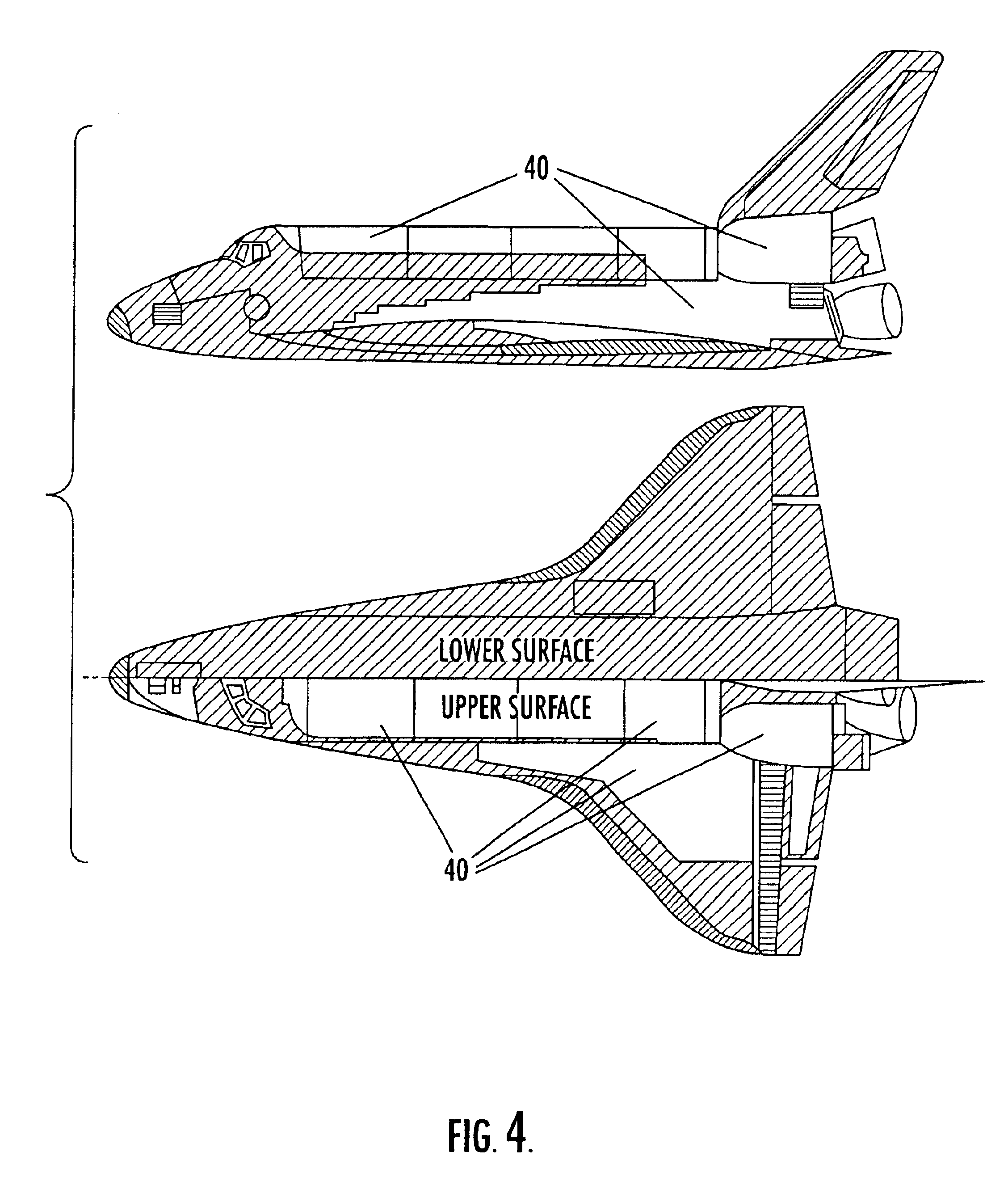Reusable surface insulation containing polybenzazole
a polybenzazole and surface insulation technology, applied in the field of flexible thermal insulation, can solve the problems of limiting the temperature capability of this product, limiting the thermal stability, and other systems being more expensive relative to frsi in installation, maintenance, and replacement, so as to improve thermal protection, improve durability, and facilitate installation.
- Summary
- Abstract
- Description
- Claims
- Application Information
AI Technical Summary
Benefits of technology
Problems solved by technology
Method used
Image
Examples
Embodiment Construction
[0015]The present invention now will be described more fully hereinafter with reference to the accompanying drawings, in which preferred embodiments of the invention are shown. This invention may, however, be embodied in many different forms and should not be construed as limited to the embodiments set forth herein; rather, these embodiments are provided so that this disclosure will be thorough and complete, and will filly convey the scope of the invention to those skilled in the art. Like numbers refer to like elements throughout.
[0016]Referring now to FIG. 1, the invented insulation 10 comprises a felt pad 12 of polybenzazole fiber or a combination of polybenzazole and Nomex™ fibers, which is laminated to a coated ceramic fabric layer 13 along the outer mold line surface of the felt 12. The insulation 10 may be attached to the surface of a vehicle 20, such as the Space Shuttle, via a layer of adhesive 11 between the inner mold line surface of the felt and the surface of the vehicl...
PUM
| Property | Measurement | Unit |
|---|---|---|
| Weight | aaaaa | aaaaa |
| Flexibility | aaaaa | aaaaa |
| Adhesivity | aaaaa | aaaaa |
Abstract
Description
Claims
Application Information
 Login to View More
Login to View More - R&D
- Intellectual Property
- Life Sciences
- Materials
- Tech Scout
- Unparalleled Data Quality
- Higher Quality Content
- 60% Fewer Hallucinations
Browse by: Latest US Patents, China's latest patents, Technical Efficacy Thesaurus, Application Domain, Technology Topic, Popular Technical Reports.
© 2025 PatSnap. All rights reserved.Legal|Privacy policy|Modern Slavery Act Transparency Statement|Sitemap|About US| Contact US: help@patsnap.com



